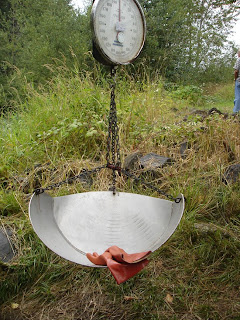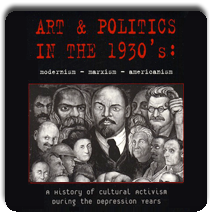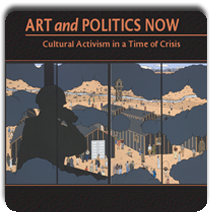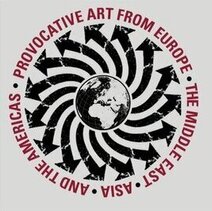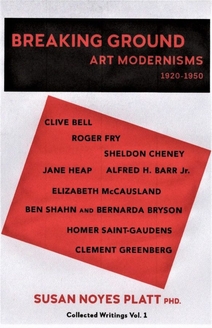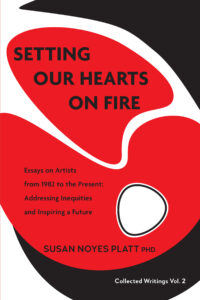Sarah Palin Post Turtle

Well I have to say something brief about Sarah Palin. The best email I got described her as a post turtle.
“While suturing a cut on the hand of a 75 year old Idaho rancher, whose
hand was caught in a gate while working cattle, the doctor struck up a
conversation with the old man. Eventually the topic got around to Sarah Palin and her bid to be our Vice President. The old rancher said, ‘Well, ya know, Palin is a ‘post turtle”.
Not being familiar with the term, the doctor asked him what a ‘post
turtle’ was. The old rancher said, ‘When you’re driving down a country
road and you come across a fence post with a turtle balanced on top,
that’s a ‘post turtle’.’
turtle’ was. The old rancher said, ‘When you’re driving down a country
road and you come across a fence post with a turtle balanced on top,
that’s a ‘post turtle’.’
The old rancher saw a puzzled look on the doctor’s face, so he continued
to explain. ‘You know she didn’t get up there by herself, she doesn’t
belong up there, she doesn’t know what to do while she is up there, and you
just wonder what kind of a dumb ass put her up there.”
to explain. ‘You know she didn’t get up there by herself, she doesn’t
belong up there, she doesn’t know what to do while she is up there, and you
just wonder what kind of a dumb ass put her up there.”
This entry was posted on September 17, 2008 and is filed under Sarah Palin Post Turtle.
Boris Groys Art and Power
I just found a new book by Boris Groys. His arguments are strangely out of date, although this is a new book from 2008.
“If we want to speak about the ability of art to resist external pressure, the question must first be asked Does art have its own territory that is worthy of defending?
The autonomy of art has been denied in many recent art theoretical discussions. If these discourses are right art cannot be a source of any resistance whatsoever. Dos art hold any power of its own or is it only able to decorate external powers? Yes art does have an autonomous power of resistance. “
Groys from “The Logic of Equal Aesthetic Rights” in Art Power
The autonomy of art has been denied in many recent art theoretical discussions. If these discourses are right art cannot be a source of any resistance whatsoever. Dos art hold any power of its own or is it only able to decorate external powers? Yes art does have an autonomous power of resistance. “
Groys from “The Logic of Equal Aesthetic Rights” in Art Power
What is wrong with this argument?
First, he is defining “resistance” as “resistance to external pressures”. Well, of course he is shaped by his own background in the Soviet Union as the champion of the dissident art movements.
In that context, resistance was to external pressures to be doctrinaire and follow a party line. His concept of the “autonomus power of resistance” is an oxymoron, resistance cannot be autonomous. What I think he meant was the power of art to defend its autonomy, which of course is a meaningless modernist dead end.
But in the US in 2008 resistance in art is resistance to capitalism in all its manifestations in the art world, and outside of it.
The artist today who can use “the power of art” to speak to the problems in the world, like those artists of the 1930s, is the resistance artist. Why should resistance be focused on defending the autonomy of art? What a waste of time!
Context is everything.
I have noticed that among other critics bred under Communism that they often read political art as only that which is dictated by an oppressive central authority, and therefore political art is always bad. They often tout abstraction as a sign of freedom. Indeed abstraction can be a political act in certain environments. At the same time, critics from formerly communist countries like Marius Babias have a far more complex reading of the relationship of art and politics than the typical US critic who is hampered still by the Greenberg legacy. Amazing how enduring that is.
Today, the art world still loves abstraction as a marketable product. Art critics ( and artists)can still thoughtlessly dismiss political art as “preaching” or whatever.
see www.artofdemocracy.org, a nation wide group of exhibitions and artists who are creating art that speaks to what is happening now. And that is just the beginning. There are several shows in New York including Martha Rosler’s new work that continue the tradition of engaged art.
Maya Lin’s Confluence Project: The Bird Blind
 Near Troutdale Oregon is the Bird Blind. It is set in a large tract of land that belongs to the Department of Forestry. They have been trying to restore it for many years.
Near Troutdale Oregon is the Bird Blind. It is set in a large tract of land that belongs to the Department of Forestry. They have been trying to restore it for many years.
The Confluence Project has placed the Bird Blind at what will be the Confluence of the Sandy River and the Columbia River, once the original delta of the river is restored to what it was in the early 19th century before it was diverted by dams.
Right now, it is near the river, but not on it.
The Bird Blind is the opposite of its name. We stand inside of it and we cannot see out- the slats are too close together. What we can see are carefully printed texts based on precise observations by William Clark from 1804, the various names for those species, and whether they have survived or are endangered, a species of concern or entirely extinct. The Lewis and Clark expedition were astonished by the wealth of plants that they saw that they didn’t even know.
In a structure that feels almost like a cage with an open door, the intensity of being surrounded by this marking of loss and threatened loss as a result of our actions on the land is extraordinary. One minute you are walking in a landscape that is used mainly by off leash dog walkers and the next you are inside of a major work of art.
In comparison to the Vietnam Memorial instead of descent, there is ascent. Instead of an open wedge there is an semi enclosed circle. Instead of a monument to humans, there is a tribute to lost species and birds, as well as a marking of survival.
The structure is built of black locust, sustainably harvested. Black locust is a long lasting wood that is itself an invasive species. Maya Lin ( she is above inspecting the not quite finished project) spoke of this site as representing the pure goal of the Confluence from the perspective of restoration and witness. In five to ten years, as the Sandy River finds its natural course, the trees will cover it. The project also collaborated with near by schools in Troutdale. Native Americans organized workshops that encouraged children to think about the same principles as the Confluence Project, losses and survivals since Lewis and Clark.
Six schools created a Legacy Pathway that included drawings and poetryby the students. 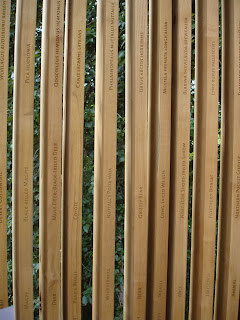

This entry was posted on September 6, 2008 and is filed under Bird Blind, Maya Lin Confluence Project, Troutdale schools.
Maya Lin’s Confluence Project: The Amazing Land Bridge
 This is Maya Lin walking up Land Bridge from the Columbia River to Fort Vancouver.
This is Maya Lin walking up Land Bridge from the Columbia River to Fort Vancouver.
Also shown is a model to give you the full effect of this bold concept, the artist Lillian Pitt and the architect John Paul Jones.
Confluence Project is the largest work of Land Art ever created. It extends 450 miles along the Columbia River and includes seven different sites. The initial impulse was part of the commemoration of Lewis and Clark’s journey in 1804, but it is a commemoration of loss, a celebration of rebirth, a restoration of the land, and as the new brochure declares ” (it is)places reclaimed, transformed, re-imagined.”
Maya Lin and the Confluence Project are collaborating with many different people in order to make these sites happen, but particularly with Native Americans .
They invited her to be a part of the project after seeing the film on her Vietnam Memorial. They felt that she could commemorate the loss of their cultures since Lewis and Clark.
But the project also marks the loss of birds, and other species, as well as plants and flowers by recording Lewis and Clark’s journals and making reference to their current status. ( see Bird Blind entry next)
The first site dedicated was Cape Disappointment at the Confluence of the Columbia River and the Pacific Ocean. I have written about it in Sculpture magazine, along with an exhibition at the Henry Art Gallery at the University of Washington in Seattle of Maya Lin’s sculpture.
Last weekend the Land Bridge was dedicated. John Paul Jones who also completed the National Museum of the American Indian in Washington DC was responsible for making it into a reality, starting from an extraordinary concept, developed with Maya Lin, of an implied circular form.
The site of the Land Bridge is on Fort Vancouver, a military site established in 1848 when the US basically made the Hudson Bay Company leave. The Hudson Bay Company had established itself on this site on the shores of the Columbia River in 1824, twenty years after Lewis and Clark passed by. The site had already been cleared with controlled burning by native tribes in order to grow plants like Camas that they used in their daily lives for eating, making baskets, medicine and many other purposes. It was a place where inland tribes came down to the river to trade with the river Indians. It was called the “place of the turtle”. The connection between the inland and the river has now been reestablished with the Land Bridge.
It is called Land Bridge because it includes native grasses and plants. John Paul Jones called it “pulling the prairie over the road”, and indeed that is what it does. It spans a wide highway, then drops down to an historic apple orchard with the first apple tree planted in Washington State in 1825. Then there is an underpass under the railroad and you arrive at the river.
The Bridge is a beautiful sweep that meanders like the original Indian Trail, even as it suggests part of an implied circle. Maya Lin and John Paul Jones collaborated on the original concept when the whole project seemed almost impossible.
The bridge is marked by a Welcoming Gate made of cedar and basalt
 with a glass sculpture that captures the light and makes reference to the role of women in the Columbia River cultures. Three seating areas are marked, “land” “water” “people”, with Indian words for those concepts cut into the vista point. Lillian Pitt who is photographed above near her seating “baskets” created benches with stainless steel backs that have designs evoking petroglyps and pictographs from the Columbia River.
with a glass sculpture that captures the light and makes reference to the role of women in the Columbia River cultures. Three seating areas are marked, “land” “water” “people”, with Indian words for those concepts cut into the vista point. Lillian Pitt who is photographed above near her seating “baskets” created benches with stainless steel backs that have designs evoking petroglyps and pictographs from the Columbia River.
This entry was posted on and is filed under Confluence Project, John Paul Jones, Lillian Pitt, May Lin.
Frank’s Landing

This is Willie Frank at Frank’s Landing. Messages from Frank’s Landing by Charles Wilkinson tells his story. Willy Frank was first arrested for fishing on his own Nisqually land when he was 14 years old. He led the fight in the Northwest to gain Indian fishing rights. He was arrested many many times but ultimately the tribes were victorious in the Boldt Decision of 1974, which supported the tribes right to fish according to their treaty rights that dated back to the Isaac Stephens Point No Point Treaties of 1855. More than that, the Indians got a fifty percent allocation. The radical decision affected “21 tribes, several hundred tribal fishers and thousands of non Indian commercial fishers, hundres of thousands of sports fishers and dozens of rivers.” (Wilkinson 56).
Willie Frank is also an environmentalist. He is profoundly connected to the land and the river and the fish. As Charles Wilkinson puts it ” the Indian world view (is)an equality with the natural world, an actual belonging to the same community is in the blood stream of Indian people. “
Today his sons fish on the Nisqually River starting from the Landing that he gained by allotment in 1885. Right up the road are shopping malls and big boxes. On the other side of the river is Fort Lewis Military Reservation which of course also used to be Nisqually land. But Willie Frank has a good relationship with the military ( I hope it endures) and they keep a lot of Fort Lewis undeveloped and allow Indians to gather traditional roots and berries on the land.
He and his family continue to fish. The net fishing they do dates back for centuries. While I was there, his sons and their assistants caught about 100 King Salmon in two hours. The Kings are running right now. Of course times have changed, now they use motor boats and plastic nets, instead of canoes and cotton nets, but the age old tradition of fishing for salmon is still providing the center of their lives and culture
Tobin James Frank refused to sell his fish for Two dollars a pound ( !) Can you believe that someone offered that little. I told the dealer it was 25 dollars a pound at my local grocery store, but he said there were some steps in the middle. I’ll say. So I am showing the empty scale that was rejected. Tobin James Frank offered us a fish for 10. but we insisted on paying 20. It was about 8 pounds of fresh salmon. He cleaned it for us and threw the guts back in the river where they belong, as Willie said. We enjoyed it all week and froze half. Yum.
This entry was posted on August 27, 2008 and is filed under Boldt decision, salmon fishing, Willie Frank.
Global Warming and the Art World

Well, I have been thinking I need to get onto this subject. It is SOOO much in the news right now.
So what do we have to show for the new trend.
Really, it is the same artists, the same strategies, the same work, with a new trendy title. There seem to be about three basic approaches: illustrate it, correct it, or educate us about it.
I am not denigrating a single artist who tries to address the environmental calamity that this world is becoming!
What is sad is that there is so little effect from this type of art. It is the suburban part of the art world in some ways. Artists who are concerned about the environment get funded to make something out in nature, about nature, or for nature. Some of these works are terrifically interesting. One of my favorites is Lynne Hull who is based in Colorado. She does research and makes humble pieces in the land about habitat loss. For the exhibition Weather Report Art and Climate Change she made highway signs
“Wildlife Warning Global Warming /Got Water?” This is not one of her most subtle works. She says that she creates “trans species art and sculpture for wildlife”-that is the part I like. She makes, for example, “raptor roosts” for hawks so they won’t nest on electric poles and get killed.
Weather Report is a perfect example of repackaging the same artists with a new brand and for good luck throw in the more recent trendy artists. It was curated by uber famous engaged curator/critic Lucy Lippard, who lives OFF THE GRID -it doesn’t get better than that does it- in New Mexico. So it had a big advantage over anything in dirty old New York City (but I read that New Yorkers have a much lower carbon footprint than most people and don’t forget Lucy has to drive and fly a lot to go anywhere).
No one comes close to the work of Helen Mayer Harrison and Newton Harrison, (that’s there work in the picture about the “endangered meadows of Europe from the late 1990s), who have been working for decades to address and reverse environmental damage. Helen as a sociologist and Newton as a sculptor network with all sorts of different kinds of people, scientists, politicians, community groups. Networking is the model that works in my opinion.
Weather Report was all about artists talking with scientists and getting together on what to say in a visual way. It was a good idea. But of course it was in BOULDER COLORADO. Lala land of consiousness, liberal, hipness. And how much carbon was burned getting all of those artists over to Boulder to install their ideas.
But I do have to say that the virtue of a lot of these pieces was their simplicity (disclaimer I didn’t see the show, only the catalog). Like Brian Collier’s “Why is the pika worried about climate change” That is a tiny alpine animal that is going extinct because of climate change, He created a pika alarm triggered by motion and postcards with photographs of the pika.
So where does all of this lead us? Artists are mostly environmentally aware in a liberal sort of way, that is, like political liberals, they hate to think of pollution destroying the world climate, but they drive everywhere in their cars, use lots of electronic equipment and ink jet printers, etc.
That’s why I think Natalie Jeremijenko is the real thing for right now. In a sample entry from her blog titled “how Stuff is made” she comments on an article that links violence in the Congo to Sony Play Stations because the heat conducting material in Play stations Coltan drives demand for it and is mainly from the Congo. This is the type of connections we need.
As I sit at my mercury containing computer, burning a lot of electricity, I am contributing to global warming every minute. Jeremijenko has a clinic where she tells people what to DO, how to ACT, to make a difference in the problem of environmental deterioration. Connecting to ACTION is the key.
SO quit flushing the toilet all the time, save those paper towels for re use, don’t get carry out, and try to use the car less. All easy to do. But just last night I accepted a styrofoam containerwith the rest of my Mexican Chimichanga
in spite of all my principles. By January they will be illegal in Seattle though, so the government has actually done something helpful.
This entry was posted on August 14, 2008 and is filed under Helen Mayer Harrison and Newton Harrison, Lynne Hull, Natalie Jeremijenko.
Eco Art Back to the Future


Rebecca Bray and Britta Rile have a provocative piece written up in the special ecology issue of Art News
Called Drink PeeDrinkPeeDrinkPee 2008 ( the title doesn’t quite fit the smartness of the work)
it uses urine and light to illuminate what happens to that stuff you flush down the toilet.
In their art work it grows algae in a fishbowl.
Urine is full of phosporous and nitrogen, an excellent fertilizer for the earth, but bad for the marine world.
The artists have produced kits for $15. that allows people to make plant fertilizer from urine.
So why back to the future?
Because on the same day that I read about this art work, which I commend, I also read Paul Kane’s Wanderings of an Artist Among the North American Indians, in his discussion of the Chinook Indians practices in the 1840s, before we took away all their land in 1855. ” Chinook olives.. are prepared as follows – About a bushel of acorns are placed in a hole dug for the purpose …covered over with a thin layer of grass on the top of which is laid about half a foot of earth. Every member of the family henceforth regards this hole as the special place of deposit for his urine. . In this hole the acorns are allowed to remain four or five months before they are considered fit for use. However disgusting such an odoriferous preparation would be to people in civilized life, the producet is regarded by them as the greatest of all delicacies.” 128
So urine as a fertilizer is nothing new.
Urine contains all those birth control pill hormones, all those millions of dollars of drugs everyone is taking, and it is all being passed right into the fish in the sea. In the Northwest we get salmon with strange sexual characteristics from the hormones that we are giving them.
One of my big obsessions is garbage and sewage and water and how we just dump everything out of sight. I like this art work because it is making visible a process that we don’t even think about.
This entry was posted on and is filed under REbecca Bray Britta Riley Drink Pee Drink Pee.
Olympics Beijing
The opening show was spectacular, even if the little girl we saw was not the one who sang. What else is new. So the Chinese are no different from Americans – worship perfect beauty and cute in little girls over all else of course.
What I want to know is if anyone can tell me if the Chinese actually skipped most of the twentieth century in that show. Did they skip the modern period, the communist period, all of it???
I was blown away that NBC commentators could actually give us references to Chinese PHILOSOPHY. Of course it was all fed to them and they had to really stretch, but they did do it!
The historic periods were stunningly presented, biggest in the world LED screen with 2008 drummers ( shown here – is this a bit Leni Riefenstahl anyone- do we get any chills about power and control here?) , tai chi masters ( how about that for moving energy) , movable type people, rowers ( for the silk road), and empresses. Then they jumped to the 1970s on NBC, with lots of people in green outfits and some glib conversation about freedom ( that is after the cultural revolution) , and threw in a kite, a globe with dancers, etc. and of course the final torch
Technologically it was amazing.
By contrast the US car ads were SO twentieth century!
This entry was posted on and is filed under Beijing Opening Ceremony.
Our Flesh of Flames Theodore A. Harris captions by Amiri Baraka


Our Flesh of Flames is a must buy, must read, must get on it book. You can buy this book from Anvil Arts Press
The collages are full of specific references to racism, and the corruptions of capitalism. Harris has drawn on events that we all know about, and presented them in a way that tells us just where they came from and where we need to be to change things.
He doesn’t pull any punches on what is wrong
Vetoed Dreams 1995 has an upside down capitol dome and a young black boy with a gag on his mouth. It is simple and clear what he is saying. Young black men have no opportunity to be part of the American “land of the free.” Black people are not surprised by Abu Ghraib. It is no different than what has been going on in the US for hundreds of years, in prisons, in slavery, in Jim Crow, in the Klan, and not just in the South by any means.
Eric Smith
is the first named person with a collage in the book. I have a link to his story, which is a horrifying, but all to familiar story of police brutality, ignorance, prejudice. Eric Smith was deaf and when he tried to communicate by signing, he was beaten to death. The collage has a picture of Wanda Hogue his mother holding a sign, Remember Eric smith, Stop Police Brutality. In the background is a travelers check from the Bank of America with a smug portrait of a white banker and an upside capitol building. The system killed Eric Smith.
We Wear Our Flesh like Flames 1999, the title work of the book, has a fire in the background and two African women in the foreground carrying large containers on their heads. The flames are the city burning.
Betrayal
Makes a reference to cotton pickers in the foreground and has a reproduction of Leonardo’s Last Supper, with a haloed Christ at the center. The distance from Christian love and the oppression of impoverished cotton workers is vast.
Meditations for Betty Shabazz, 1998
Shabazz was Malcolm X’s widow. The complex image has a grieving Shabazz in the foreground, with references to Mumia abu Jamail’s unfair imprisonment, a piece of a statue of liberty and other details. The intersection of crucifixion and the American Express is again included.
So the themes are the sham of the American myths of freedom and opportunity in the face of the slaughter of black people. There are also homages to poets like Sonia sanchez and Lamont B. Stptoe, Poets against the War, and perhaps most poignent, the Long Dream, the face of a young black man behind bars behind a wall of concrete that is splitting up.
This entry was posted on August 13, 2008 and is filed under Our Flesh of Flames Theodore A. Harris.
LERT Living Engaged Radical Theater!
Last night we saw three short plays performed for free in a courtyard of an apartment building.
“Eight To One,” was the first production by LERT, Living Engaged Radical Theater
It was inspired by the Winter Soldiers Iraq Veterans Against the War event in Seattle on May 31.
Artistic director of LERT Andrew Perez, and a group of young actors from Seattle University and Cornish, as well as a few other actors that responded to the call, put on three plays that addressed the effects of war on soldiers after they return home. It included real incidents from the Iraq war, the difficulties of achieving intimacy, the insanity of caring about others in the midst of the mindless killing in Iraq, the craziness of life’s random acts of violence, and much more.
Hidden Wounds, Hidden Costs, involved the unwillingness of young returned soldiers to talk about their experiences, the high suicide rate and the echoes of suicide among Vietnam soldiers.
Beverage Oasis was about the insanity of everyday life, the disconnects between people, and the perpetration of violence that can erupt mindlessly in response to PTSD
To-morrow we reach was more of a performance piece with a series of scenes about traumatic failures of intimacy, memories of death, and the distance between those who have killed and those who have not.
It was puncutated by the cast standing in rows calling out “move, move, move, move, move”
The effect of this sequence was both echoes of war and military, as well as perhaps directed at the audience to respond to the crisis.
Hats off to these young people for responding to the current world.
I don’t have any pictures because I forgot to take a camera and they don’t have a website. Just keep your eyes open for LERT in Seattle.
“Eight to One” is the ratio of wounded:killed in Iraq, in WWII it was 2:1 in Vietnam it was 3:1
What I was happy about is that their college programs are encouraging them to speak about issues.
Quite a contrast to visual art training!
This entry was posted on July 26, 2008 and is filed under LERT Living Engaged Radical Theater.








